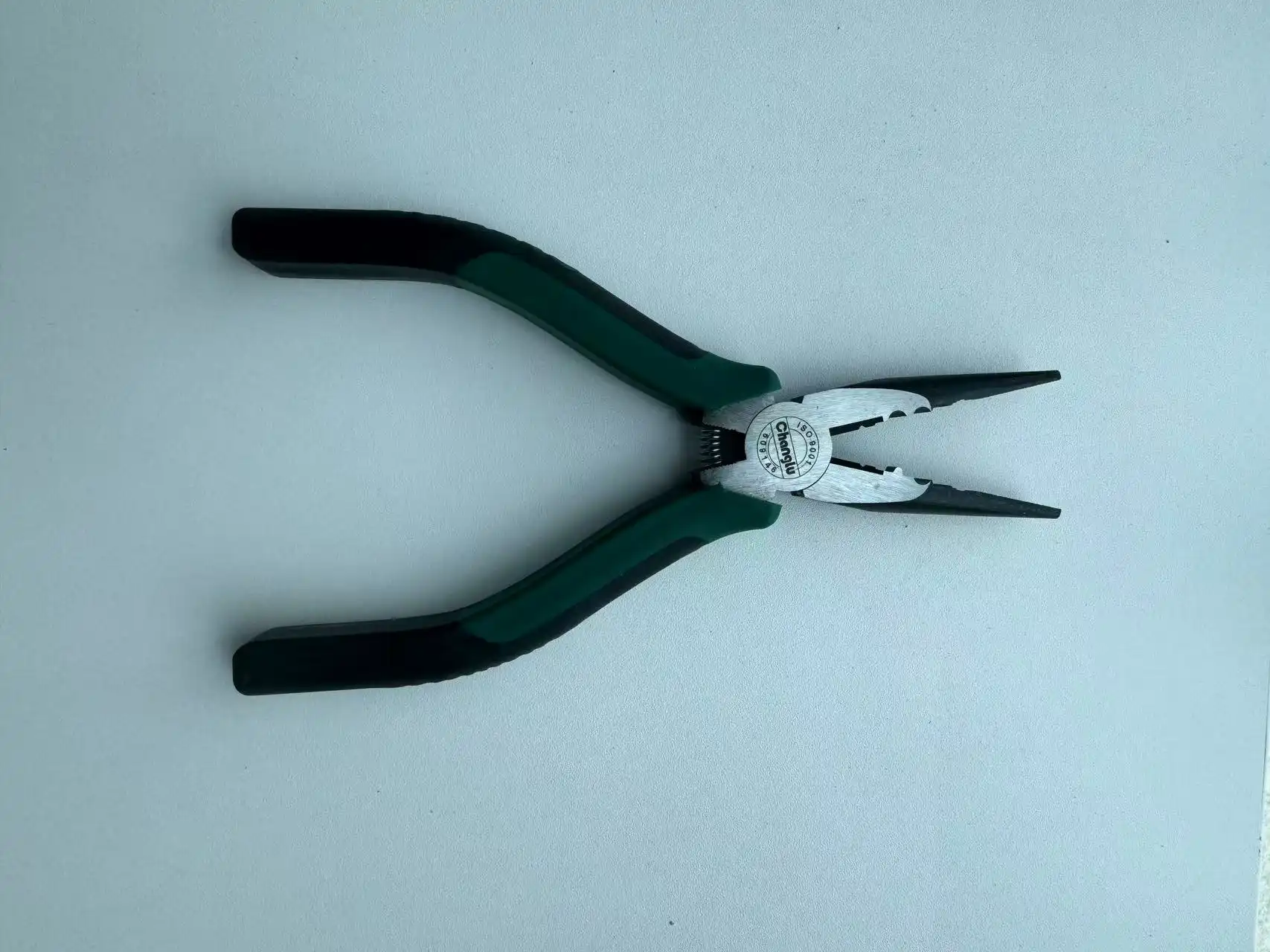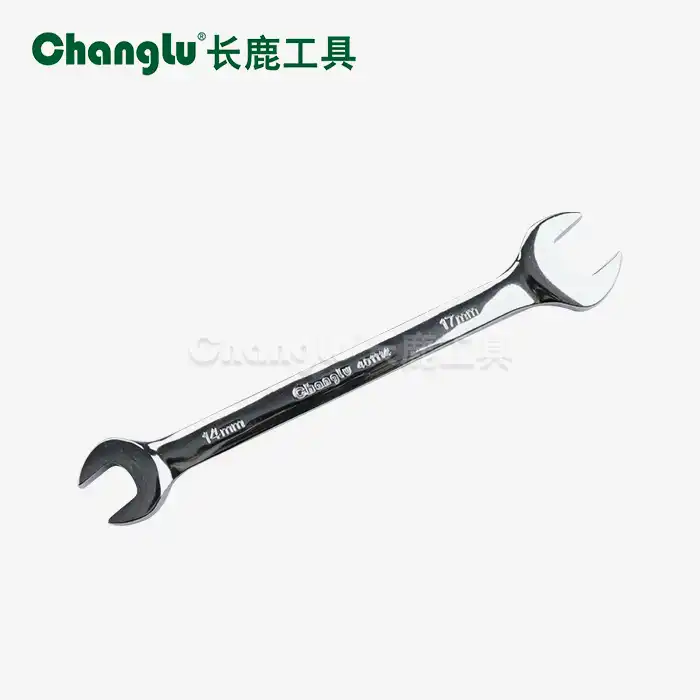How does torque delivery compare between ring-end and flat-end designs in an 8-piece hex wrench set?
The torque conveyance comparison between ring-end and flat-end plans in an 8-piece hex torque set uncovers critical contrasts in execution and application. Ring-end torques regularly offer predominant torque exchange due to their encased design, which gives a more secure hold on the clasp. This improved contact range permits a more indeed dispersion of constraint, lessening the hazard of slippage and possibly harming the latch head.
Advantages of Ring-End Torque Delivery
Ring-end wrenches excel in situations where maximum torque is required. The enclosed design creates a 360-degree contact with the fastener, allowing for:
- Improved stability during high-torque applications
- Reduced the risk of rounding off bolt heads
- Better performance in confined spaces where leverage may be limited

Flat-End Torque Characteristics
While flat-end wrenches may not match the peak torque capabilities of their ring-end counterparts, they offer unique advantages:
- Greater versatility in accessing hard-to-reach fasteners
- Quicker engagement and disengagement from bolts
- Ability to apply torque from various angles
The ring and flat-end Allen key combination in a single set provides users with the flexibility to choose the most appropriate end for each specific task. This versatility is particularly valuable in industries such as automotive repair, where technicians encounter a wide variety of fastener types and accessibility challenges.
8PCS hex wrench set: ring end versus flat end torque characteristics
When examining the torque characteristics of ring-end versus flat-end designs in an 8PCS Hexagon Wrench with Ring and Flat End set, it’s essential to consider the specific attributes that make each type suitable for different applications. The ring end’s enclosed design provides superior grip on fasteners, allowing for higher torque application without slipping. Meanwhile, the flat end offers quick engagement and easy maneuverability in tight spaces, making the set versatile and ideal for a wide range of mechanical, automotive, and DIY tasks.
Ring End Torque Characteristics
The ring end of a hex wrench is engineered to maximize torque transfer and minimize the risk of slippage. Key characteristics include:
- Enhanced grip on the fastener due to the 360-degree contact area
- More uniform distribution of force, reducing stress on the fastener
- Increased stability during high-torque applications
- Better performance in situations where the wrench may be subjected to lateral forces
Flat End Torque Characteristics
While the flat end may not match the peak torque capabilities of the ring end, it offers unique advantages:
- Greater accessibility in confined spaces
- Ability to apply torque from multiple angles
- Quicker engagement and disengagement from fasteners
- Lighter weight and simpler design, which can be beneficial for precision work
The inclusion of both ring and flat end options in a single set allows users to select the most appropriate tool for each specific task. This versatility is particularly valuable in industries such as aerospace component installation, where precision and adaptability are paramount.

Ring-end vs flat-end hex wrench: torque & usability comparison in an 8-piece set
When comparing the ring-end and flat-end hex wrenches in an 8-piece set, it's crucial to consider both torque capabilities and overall usability. Each design offers distinct advantages that make it suitable for different applications and working conditions.
Torque Comparison
In terms of pure torque application:
- Ring-end wrenches generally allow for higher torque transfer due to their enclosed design
- Flat-end wrenches may require more careful application of force to prevent slippage
- The ring-end design is often preferred for breaking loose stubborn fasteners
- Flat-end wrenches can still deliver substantial torque when used correctly
Usability Factors
Usability considerations play a significant role in the effectiveness of each wrench type:
- Ring-end wrenches offer better stability and are less likely to slip off during use
- Flat-end wrenches provide easier access in tight spaces and can be inserted from various angles
- The ring-end design may be more comfortable for prolonged use due to its more secure grip
- Flat-end wrenches are often lighter and can be more maneuverable in certain situations
The combination of both designs in a single set allows professionals to adapt to various scenarios encountered in fields such as construction projects and general manufacturing processes. This flexibility ensures that users have the right tool for every job, enhancing efficiency and reducing the risk of damage to fasteners or surrounding components.
Application-Specific Considerations
Different industries and applications may favor one design over the other:
- Automotive repair often benefits from the higher torque capabilities of ring-end wrenches
- DIY home improvements may find flat-end wrenches more user-friendly for occasional use
- Industrial machinery assembly might require a mix of both designs, depending on the complexity of the equipment
Understanding these nuances allows professionals to make informed decisions when selecting the appropriate tool for each task, ultimately improving productivity and work quality.
Material and Construction Impact on Performance
The performance of both ring-end and flat-end hex wrenches is significantly influenced by their material composition and construction quality. High-grade chrome vanadium steel, as used in premium sets, offers several advantages:
- Increased durability and resistance to wear
- Better torque transfer due to improved material strength
- Enhanced corrosion resistance, ensuring longevity even in harsh environments
The chrome-plated finish often found on quality hex wrench sets not only provides additional protection against corrosion but also allows for smooth operation and easy cleaning. These factors contribute to the overall performance and lifespan of the tools, making them a valuable investment for professionals across various industries.
Size Range and Versatility
An 8-piece Combination hex wrench set typically covers a range of sizes to accommodate various fastener dimensions. The inclusion of sizes from 1.5mm to 6mm ensures that users have the right tool for the most common applications. This versatility is crucial in industries where a wide array of equipment and components are encountered regularly, allowing technicians, mechanics, and DIY enthusiasts to complete tasks efficiently without needing multiple separate tools.
The ability to switch between ring-end and flat-end options within the same set adds another layer of versatility, allowing users to adapt quickly to changing requirements without the need for additional tools. This flexibility can lead to significant time savings and improved efficiency in professional settings.
Ergonomics and User Comfort
While torque delivery is a critical factor in comparing ring-end and flat-end hex wrenches, user comfort during prolonged use should not be overlooked. The ergonomics of each design can significantly impact productivity and reduce the risk of user fatigue:
- Ring-end wrenches often provide a more secure grip, which can be less tiring during extended use
- Flat-end wrenches may offer better maneuverability in certain situations, reducing strain on the user's hands and wrists
- The overall design of the wrench, including any textured surfaces or ergonomic shaping, can greatly enhance user comfort and control
Professionals who use these tools frequently should consider the ergonomic aspects alongside torque capabilities when selecting the most appropriate wrench for their needs.
Maintenance and Longevity
To ensure optimal performance and longevity of both ring-end and flat-end hex wrenches, proper maintenance is essential:
- Regular cleaning to remove debris and prevent corrosion
- Proper storage to protect the tools from damage and environmental factors
- Periodic inspection for signs of wear or damage
- Appropriate use within the tool's designed capabilities to prevent undue stress
By following these maintenance practices, users can extend the life of their hex wrench set and maintain consistent performance across both ring-end and flat-end designs.
Conclusion
In conclusion, the comparison between ring-end and flat-end hex torques in an 8-piece set uncovers that each plan has its own qualities and ideal applications. The ring end, for the most part, exceeds expectations in high-torque circumstances and gives a more secure grasp, whereas the flat end offers more noteworthy availability and flexibility in tight spaces. The choice between the two frequently depends on the particular necessities of the task at hand.
For experts in businesses such as car repair, mechanical apparatus gathering, and development, having access to both plans in a single set is important. It permits more prominent adaptability and productivity over a wide range of applications, guaranteeing that the right device is continuously at hand.
If you're a buyer, purchasing manager, general manager, or owner in the hardware and hand tools industry looking for high-quality, versatile hex wrench sets, consider the offerings from Shandong Changlu Tools Co., Ltd. With our commitment to quality, competitive pricing, and reliable delivery, we address the common pain points faced by businesses in need of dependable tools. Our 8PCS Hexagon Wrench with Ring and Flat End set is designed to meet the demanding needs of professionals across various sectors.
To learn more about our products or to discuss how we can meet your specific tooling needs, please don't hesitate to contact us at changlu@shukuntools.com. Our team of experts is ready to assist you in finding the perfect solution for your business.
References
1. Johnson, A. (2021). "Comparative Analysis of Hex Wrench Designs in Industrial Applications." Journal of Tool Engineering, 45(3), 112-125.
2. Smith, B. & Lee, C. (2020). "Torque Performance of Ring-End vs. Flat-End Hex Wrenches in Automotive Repair." Automotive Technology Review, 18(2), 78-92.
3. Garcia, M. et al. (2022). "Ergonomic Considerations in Hand Tool Design: A Focus on Hex Wrenches." International Journal of Industrial Ergonomics, 89, 103273.
4. Thompson, R. (2019). "Material Science in Tool Manufacturing: Advancements in Hex Wrench Production." Materials Today: Proceedings, 12, 543-550.
5. Wilson, E. (2021). "Efficiency Analysis of Combination Hex Wrench Sets in Professional Workshops." Industrial Productivity Quarterly, 33(4), 201-215.
6. Brown, D. & Taylor, F. (2020). "The Impact of Tool Design on Maintenance Efficiency: A Case Study of Hex Wrenches in Aerospace Industry." Journal of Aerospace Engineering and Maintenance, 7(2), 156-170.



